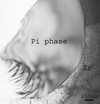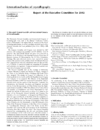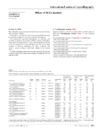issue contents
November 2003 issue

Cover illustration: Polyhedral representation of voids in the sodium-free sublattice of the crystal structure of NaAlSiO4 zeolite. See Blatov & Shevchenko [Acta Cryst. (2003). A59, 34-44].
research papers
Fourteen semiregular (edge and vertex transitive) three-periodic nets are described.
The three-dimensional structure of the huge quasicrystal approximant ν-AlFeCr was solved by electron crystallography, using high-resolution transmission-electron-microscopy (HREM) images and selected-area electron diffraction patterns from 13 different zone axes. This is the first example of an inorganic structure with over 100 unique atoms being solved to atomic resolution by electron crystallography.
Download citation


Download citation


The reason for highly contracted octopoles on fluorine atoms in organic compounds has been investigated by X-ray and neutron scattering experiments of tetrafluoroterephthalonitrile. It is shown that the contracted octopole mimics anharmonic nuclear motion. Simultaneous refinement of multipole and third-order Gram–Charlier coefficients yielded an accurate model from which interesting intermolecular properties have been derived.
The fine structure of X-ray diffuse scattering in the vicinity of a high-angle Bragg reflection from an AlAs/GaAs superlattice was studied using triple-axis diffractometry. The degree of domination in the intensity of diffuse scattering when the incoming angle is equal to the Bragg angle over the case when the outgoing angle is equal to the Bragg angle was shown to indicate the decay rate of the coherent X-ray field through the diffuse-scattering channel.
New algorithms for solving ab initio protein crystal structures with data up to 1.4 Å are described and checked by experimental data.
The probability distribution function estimating triplet invariants when anomalous data are present has been reformulated. The limits of the method have been identified.
The iterative Fienup–Gerchberg–Saxton algorithm combined with discrete Hilbert transforms were shown to be effective for phase extension in crystallography. The iterative algorithm conventionally used for phasing diffuse scattering can also be applied to problems in conventional crystallography.
Electron diffraction methods were used to determine the crystallography of a new metastable phase in the Zr–N system. The phase has space-group symmetry I4 mmm with a ≃ 0.66 nm and a c
mmm with a ≃ 0.66 nm and a c a ratio of 0.81.
a ratio of 0.81.
international union of crystallography
Free 

Free 



 journal menu
journal menu





























